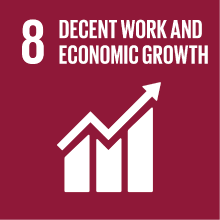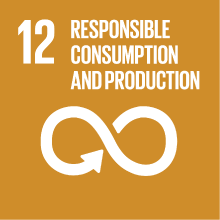GREEN CHEMISTRY
- Academic year
- 2019/2020 Syllabus of previous years
- Official course title
- CHIMICA VERDE
- Course code
- CT0060 (AF:321544 AR:143076)
- Teaching language
- Italian
- Modality
- On campus classes
- ECTS credits
- 6
- Degree level
- Bachelor's Degree Programme
- Academic Discipline
- CHIM/06
- Period
- 2nd Semester
- Course year
- 3
- Where
- VENEZIA
- Moodle
- Go to Moodle page
Contribution of the course to the overall degree programme goals
Green chemistry focusses both on the development of fundamental science as well as on its industrial implementation towards greener products and processes and on its effects on the environment and on the population. Green chemistry therefore moves away from the traditional pollution treatment or abatement methods, and instead addresses the issue "at the source" by considering alternative sustainable routes that avoid the production of waste: it is better to prevent damage rather than to cure adverse effects.
Green chemistry embodies the concept of “benign by design” and involves tailoring or modifying chemical processes to minimize or eliminate hazardous waste. Green chemistry need not be more difficult or costly than existing technologies and can even be significantly cheaper when waste disposal and remediation are factored into a product’s cost analysis. Green chemistry encompasses all chemical related disciplines and provides a method to evaluate and examine all existing processes and products currently being used or created. This green chemistry course aims at introducing the fundamental knowledge for the design and implementation of greener chemical technologies.
Expected learning outcomes
1. Knowledge and understanding.
a. The main concepts of the discipline, its historical development, its growth and expansion from its birth in the early 90s to today.
b. To understand the scientific, economic and social reasons for the development of green chemistry, the main health and environmental problems associated with some chemical products and processes.
c. The 12 principles and the main scientific, technological and methodologies of green chemistry - including the use of alternative solvents, catalysis, new raw materials, new reagents, new methodologies, the development of new products and processes and new alternative technologies - with examples.
2. Ability to apply knowledge and understanding
a. Ability to evaluate whether a chemical product or process is or is not eco-sustainable and whether it poses risks to health or to the environment. Ability to recognize the critical issues and potential sources of pollution, waste, toxicity and danger associated with chemical transformations.
b. Knowing how to find, consult and understand the main bibliographic sources to support the concepts of green chemistry.
c. Understanding and applying the interdisciplinarity of the methods of green chemistry throughout the chemical sciences and the related disciplines.
d. Knowing how to identify benefits, disadvantages and which aspects can be improved of a chemical product or process from the point of view of efficiency, safety, environment, health and costs. The homeworks - an integral part of the assessment as described in the learning assessment methods - contribute to establishing and developing this knowledge.
e. Ability to identify the main elements that can be improved in terms of eco-sustainability and safety in dealing with any chemical operation or process (synthesis, analysis, purification, separation, etc.).
3. Critical ability.
a. Being able to evaluate chemical processes comparatively, in terms of environmental sustainability, health and safety.
b. Develop critical capacity and independent judgment of the impact on human health and the environment of a chemical product or process.
4. Communication skills.
a. Ability to explain and argue with rigor, clarity and conciseness the concepts and principles of green chemistry through examples and case studies.
b. Ability to graphically represent the main products, solvents, methodologies and processes of green chemistry in writing.
c. Knowing how to critically discuss different products or processes in terms of eco-compatibility, safety and health.
d. Knowing how to interact in the classroom with the teacher and with the classmates, formulating and answering questions and discussing the problems posed by the teacher.
5. Learning skills.
a. Knowing how to identify independently the principal concepts expressed in class.
b. Knowing how to connect and integrate topics from different fields (for example: organic chemistry, analytical chemistry, general chemistry, physical chemistry, biology, biochemistry, industrial chemistry, toxicology, safety, etc.) from the point of view of green chemistry.
c. To learn how to implement one's own training through bibliographic research.
d. Solving the homeworks
Pre-requirements
Contents
Definitions and historical development of green chemistry
Examples of chemical processes and some problems and accidents
Development of legislation
Waste and by-products of a chemical process or transformation
Pollution, polluting compounds, sources of risk and exposure.
Atom economy and E-factor: parameters to evaluate greenness of a reaction or process
Efficiency of a chemical process, examples of green processes
The 12 Principles of green chemistry
Use of less toxic reagents, with examples
Catalysis as a tool for green chemistry: homogeneous, heterogeneous, phase transfer, biocatalysis, with examples
Green solvents: water, supercritical solvents, ionic liquids, renewable, with examples
Raw materials of renewable origin for the chemical industry of the future, with examples
Alternative methods of synthesis with reduced environmental impact, with examples
Referral texts
Green Organic Chemistry in Lecture and Laboratory, A. P. Dicks Ed., 2012, CRC Press, Boca Raton. ISBN 978-1-4398-4076-4
Assessment methods
The rest of the grade is assigned with an oral exam on the topics of the course. The oral exam consists of one or two questions aimed at ascertaining the knowledge acquired by the student on the course program and on the homeworks. It is expected that the student knows how to answer comprehensively and articulately using logical arguments and proper scientific language. The oral exam lasts from 10 to 20 minutes depending on the clarity and coherence of the answers.
Type of exam
Teaching methods
The teachin material is available and can be downloaded on the "Moodle" platform of the University.
Further information
- The impact of organic syntheses on the environment and on the human health
- The impact of industrial processes on the environment and on the human health
- Natural resources as feedstooks for organic transformations
- Alternative methods in organic synthesis
- The most important methods in green organic metrics
Accommodation and support services for students with disabilities and students with specific learning impairments: Ca’ Foscari abides by Italian Law (Law 17/1999; Law 170/2010) regarding support services and accommodation available to students with disabilities. This includes students with mobility, visual, hearing and other disabilities (Law 17/1999), and specific learning impairments (Law 170/2010). In the case of disability or impairment that requires accommodations (i.e., alternate testing, readers, note takers or interpreters) please contact the Disability and Accessibility Offices in Student Services: disabilita@unive.it.
2030 Agenda for Sustainable Development Goals
This subject deals with topics related to the macro-area "Circular economy, innovation, work" and contributes to the achievement of one or more goals of U. N. Agenda for Sustainable Development


